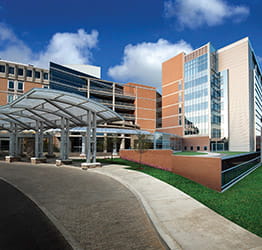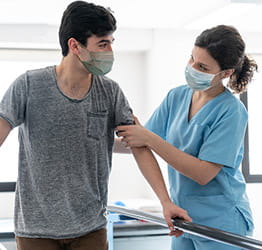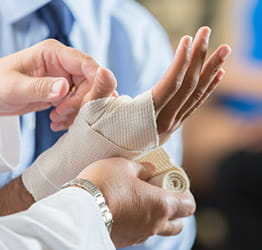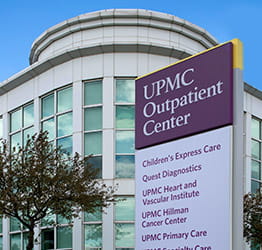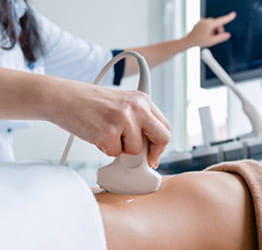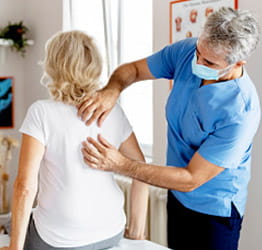The Challenge: A Nasty Collision with a Glass Door
Danish college student Flora Schmelling was leaving a Copenhagen wine bar with friends in May 2023 when she yanked on a stuck door and it slammed into her forehead.
“It really hurt, and I got a huge bump,” says Flora, who was 23 years old at the time.
It wasn’t until returning home later that night that Flora began to feel symptoms, including nausea and vomiting. When she developed intense headaches, she went to the emergency department, where she was diagnosed with a mild concussion.
“I was told to take it easy,” Flora says.
But Flora's anxiety grew as days stretched into weeks with worsening symptoms, including severe headaches, extreme fatigue, increased heart rate, hot flashes, burning skin sensations, jaw tension, leg cramps, and frequent urination.
Flora was able to postpone her exams until August, but in June, she couldn’t avoid working a three-day design festival associated with her studies at the Danish School of Media and Journalism. She was surprised to see her symptoms improve each day.
“I saw a lot of people and did a lot of talking. It was good to be out again, and I was feeling so good,” Flora says.
But when packing things up on the last day, Flora accidentally hit her head on a lamp.
“It was a small bump, but my symptoms came back, along with my anxiety,” she says.
Flora’s Path to UPMC: Searching for Answers
Unable to return to her studies, Flora arranged a one-year sick leave from school.
Desperate for answers, she scoured the internet for information on concussions and treatment. She saw multiple doctors and specialists, including her family doctor, a neurologist, and a chiropractor. And she tried numerous treatments, from physical therapy and yoga to acupuncture, massage, and craniosacral therapy.
Meanwhile, Flora’s symptoms escalated, and her anxiety spiraled. She had constant headaches, neck pain, tension, exhaustion, mood swings, and panic attacks. She moved home, and her world became smaller as she withdrew from friends and her social life.
“The anxiety was overwhelming," she says. "My symptoms seemed so abnormal for a concussion that, at one point, I was convinced I had a blood clot or intracranial bleeding. My doctor just said, ‘You need to calm down.’
“With no answers, I got increasingly nervous," she adds. "It filled my thoughts. My whole life was on hold. Everything got darker: my mind and my mood.”
At one of her lowest points, Flora stumbled across UPMC during a Google search. She pored through information on the UPMC Sports Medicine Concussion Program website.
Flora was relieved to finally read stories about patients with similar symptoms. She even tracked down one of them — Swedish concert promoter Daniel Johansson — who spent hours talking to her by phone.
“He gave me my first real glimpse of hope,” Flora says.
Concussion Treatment: Journey to Recovery
With Daniel’s encouragement, Flora contacted UPMC. She scheduled an appointment in May 2024 with Michael “Micky” Collins, PhD, the concussion program’s clinical and executive director.
“Daniel gave me some tips, but he said the whole package was important," she says. "I knew I had to go."
Before traveling to the United States, Flora began to follow some UPMC treatment strategies Daniel shared. She started working out at the gym, walking outside, and going out with friends.
“I felt better, but I wanted confirmation I was on the right track,” Flora says.
One year after her accident, Flora traveled to UPMC to meet with Dr. Collins. One of the first things she did was complete a questionnaire about her symptoms, including bladder issues and leg cramps.
“I instantly knew things would work out if they already knew about these signs,” she says.
Flora told Dr. Collins, “I miss my school, I miss my school life, and I miss partying."
She later heard Dr. Collins tell his team: “Let’s get this girl back to partying.”
“I felt understood,” Flora says. “He knew I wanted my life back.”
The Solution: Breaking Out of 'Fight-or-Flight Mode'
Dr. Collins told Flora she was experiencing major nervous system issues from her concussion. She had been protecting her brain and was stuck in "fight-or-flight mode."
“You need to break out of that. You need to get a job and go back to school,” Dr. Collins told her. “You are on the right path. We will develop a program for you, and you will get better.”
Following Dr. Collins’ instructions to “get out and get moving,” Flora immediately went on a three-hour shopping spree at local thrift stores in Pittsburgh. At her hotel, she watched a movie and read a book.
“As soon as he gave me the go-ahead, I felt my anxiety release,” she says.
Dr. Collins adjusted Flora's anxiety medicine, told her she didn’t need to continue wearing special eyeglasses that one doctor prescribed, and advised her to stop doing eye exercises. The team gave her physical therapy and vestibular (balance) exercises to do, plus 30-minute daily walks and cardio workouts.
“They urged me to go out and do all the things I hadn’t dared to do, like returning to school and going to concerts and festivals,” Flora says. “I put my trust in UPMC and my treatment.”
Three months later, Flora was back in school, commuting by bike, going out with friends, and dating a new boyfriend.
“I’m proud of you,” Dr. Collins told Flora in her final virtual follow-up appointment. “If you have a setback, if you hit your head again, you have the tools you need. You know what to do.”
“I’m proud of myself, too,” Flora says. “UPMC gave me the tools and the confidence I needed. It’s behind me now, and I feel certain I will stay healthy.”
To Learn More
For nearly a quarter-century, UPMC has provided concussion services to traveling patients from throughout the United States and worldwide.
Flora's treatment and results may not be representative of all similar cases.





